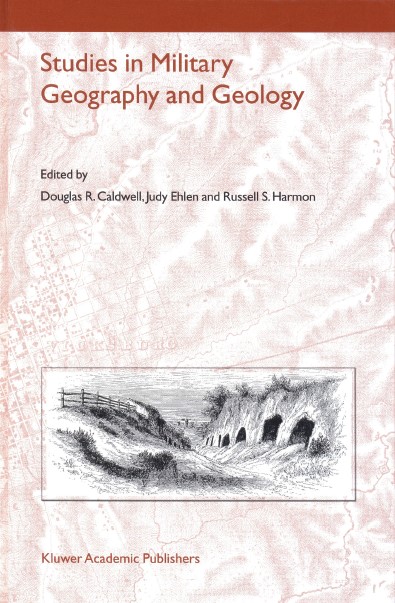West Point, New York, USA
(Conference summary reproduced with permission; original text published in: Häusler, H. 2009. Report on National and International Military Geo-Conferences held from 1994 to 2007, MILGEO, Nr. 30E, Austrian Ministry of Defence and Sports).
The volume of the fifth conference introduced military geography and addressed a broad range of military topics ranging from the strategic perspective, through analyses of historical battles at the operational and tactical levels, to the use of advanced technologies applied to actual military problems. It contains selected papers presented at the “International Military Geology and Geography Conference” that was held at the U.S. Military Academy, West Point, New York in June 2003. Table 1 gives an overview on these contributions.
Table 1 – Papers
| Author | Title | Subject |
|---|---|---|
| BOLAND & BOLAND | The impact of geology on the march to the battle of Eutaw Springs | Geology, history |
| DALTON | Saratoga | Geography, history |
| DAY | Military campaigns in tropical karst – The Maroon Wars of Jamaica | Geology, history |
| DIXON | The 1815 battle of New Orleans | Physical Geography, history |
| EASTLER | Military use of underground terrain | Geography, caves |
| EHLEN & ABRAHART | Terrain and its effects on the use of artillery in the American Civil War | Topography, visibility |
| GALGANO | Decisive terrain | Geography, history |
| GELLASCH | Groundwater | Hydrogeology |
| GILEWITCH | The effect of military operations on desert pavement | Geology, trafficability |
| GROSS, GHOSH, MANDA & WHITMAN | A GIS-based spatial analysis of caves and solution cavities | Geology, caves |
| GUTH | The geometry of line-of-sight and weapons fan algorithms | Topography, visibility |
| HARMON, DILLON & GARVER | Perspectives on Military Geography | Geography |
| HENDERSON | The geology of the Chickamauga Campaign, American Civil War | Geology, history |
| MAHANEY | A geological/topographical reconnaissance of Hannibal´s invasion route into Italia in 218 BC | Geography, history |
| MARTIN | Canadian military geography 1867 – 2002 | Geography, history (Canada) |
| McDONALD, BULLARD, BRITT & O` RUIZ | Development of an archaeological predictive model for management of military lands |
Geology, desert |
| McDONALD | Military foot traffic impact on soil compaction properties | Geology, trafficability |
| PALKA | A military geography of the Hudson Highlands | Geography, history |
| PATRICK, ROTH & LEMIRE | Managing groundwater resources at Camp Shelby training site, MS (USA). |
Hydrogeology |
| ROGERS | Water and environmental security in the Middle East | Environmental security |
| ROSE & WILLIG | German military geologists and geographers in World War II | Geology, geography, WWII |
| SCHROEDER | Development of tactical geography in the nineteenth century |
Geography, history |
| SELF | War in the heartland – The role of geography in Operation Barbarossa 1941 – 1942 | Geography, WWII |
| WHISONANT | Military geology and geography in the American Civil War | Geology, geography, history |

In total, twenty-four papers were published by in total thirty-eight authors and co-authors. They were sorted to three parts: Part I introduced to geo-perspectives; Part II to historical vignettes; and, Part III to technologies of the twenty-first century. The introduction to the papers of the “International Conference on Military Geology and Geography” is given by Brigadier General Gerald E. Galloway (U.S. Army; retired) citing the U.S. Army Field Manual 100-5, Operations (1982, 3-1): “Weather and terrain have more impact on battle than any other physical factor, including weapons, equipment, or supplies.”
Entering the 21st century, military and civilian leaders are focusing their attention on transforming ponderous Cold War armies into forces that are highly mobile on the ground, transportable by air, and more logistically self-sufficient. The task of leading this transformation, employing technology – enhanced forces and serving as land stewards, demands that military leaders possess an even greater understanding of military geology and geography than was required in the past. More than ever before, the employment of modern forces places heavy responsibility on commanders to understand the natural and cultural environments in which they will operate (GALLOWAY, 2004, p. 2). Like the fourth proceedings of the Greenwich 2000 Conference, Kluwer Academic Publishers also printed the lectures of the 2003 West Point Conference. Unfortunately, it was out of stock in 2007.
